Company: Shopify
Founded: 2004
Founders: Tobias Lütke, Daniel Weinand and Scott Lake
Description: Ecommerce platform
This playbook focuses on marketing strategies and tactics used by Shopify.
The marketing playbook series is for founders who want to:
1. learn from real-life examples
2. discover which growth strategies fit which businesses and industries
3. find the 20% of strategies that return 80% of results
Gamified Marketing

1. Build-A-Business Competition
Shopify uses competition and prizes to drive adoption. Previous winners include companies such as DODOcase and MVMT Watches. (Competition)
Content Marketing

2. Interviews
Shopify’s CEO inspires audiences by sharing lessons on the importance of small businesses while raising brand awareness. (Interview)
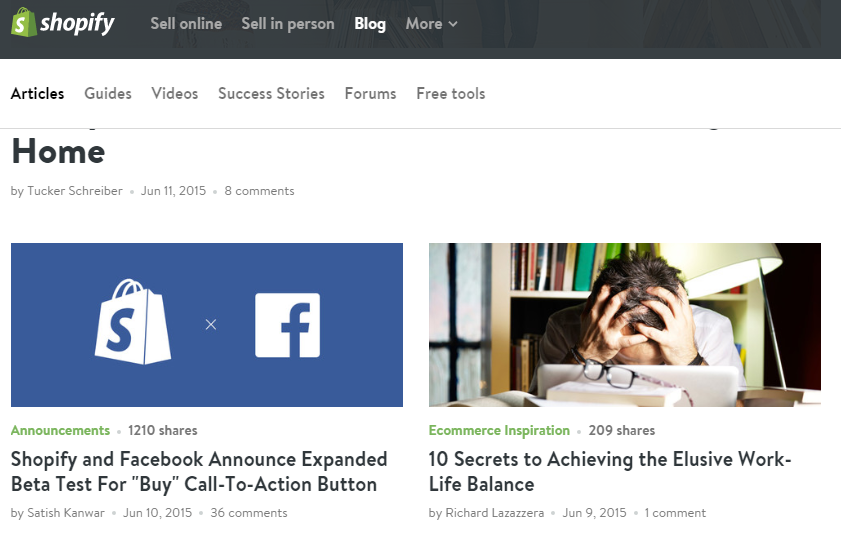
3. Blog Posts
Shopify heavily invests in blog posts. Writers craft content that entrepreneurs will find helpful or entertaining. (Blog)

4. YouTube
Shopify stands out in it’s use of video content. An in-house team of 8 videographers focus on telling stories that resonate with Shopify’s target audience. (YouTube | Study)
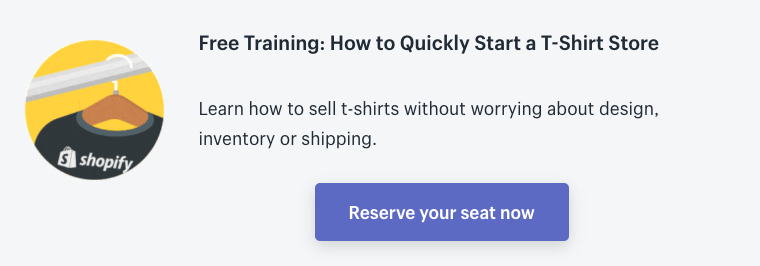
5. Webinars
Webinars reduce friction for potential Shopify customers. Shopify simulates urgency with signup windows and timers. (Webinars | Post)

6. Shopify Academy
Shopify Academy offers courses focused on customer success. Customers can only remain customers as long as they stay in business. (Shopify Academy)

7. Shopify Masters Podcast
The Shopify Masters podcast tells stories of successful store owners. The podcast educates, inspires and creates social proof. (Podcast)
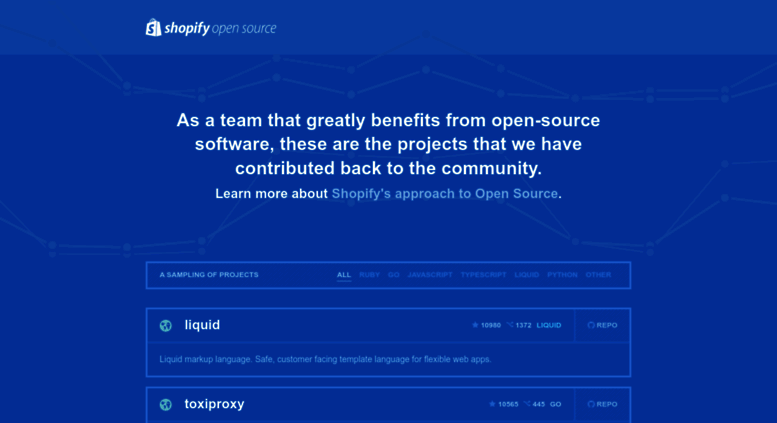
8. Open Source
Developers are key stakeholders for Shopify. The company has marketplaces for apps and templates. Contributing to open source is a great way to create goodwill and raise brand awareness. (Open Source Projects)
9. Twitter
Shopify’s more than 250k followers get updates relating to blog posts, videos and podcasts. (Twitter)
Freemium Marketing

10. Free Trial
The free trial reduces friction in the conversion process. Users get to try Shopify for 14 days without a credit card. (Pricing)
Tool Marketing

11. Business Name Generator
Shopify focuses on the entire vertical of starting a business by providing a business name generator. This also gives them a chance to capture mindshare with those entering the e-commerce space. (Business Name Generator)

12. Logo Maker
Shopify attracts potential customers by providing a logo maker. (Logo Maker)

13. Stock Photos
Shopify attracts potential customers by providing free stock photos. (Burst)
Paid Marketing

14. Google
Like most B2B SaaS companies, Shopify uses Google ads to target keywords. (Post)

15. Facebook
Shopify uses Facebook and contextual copy to attract new users. (Post)
Social Proof Marketing

16. Founder Stories
Founder Stories profile store owners while inspiring others to get started and keep going. (Founder Stories)
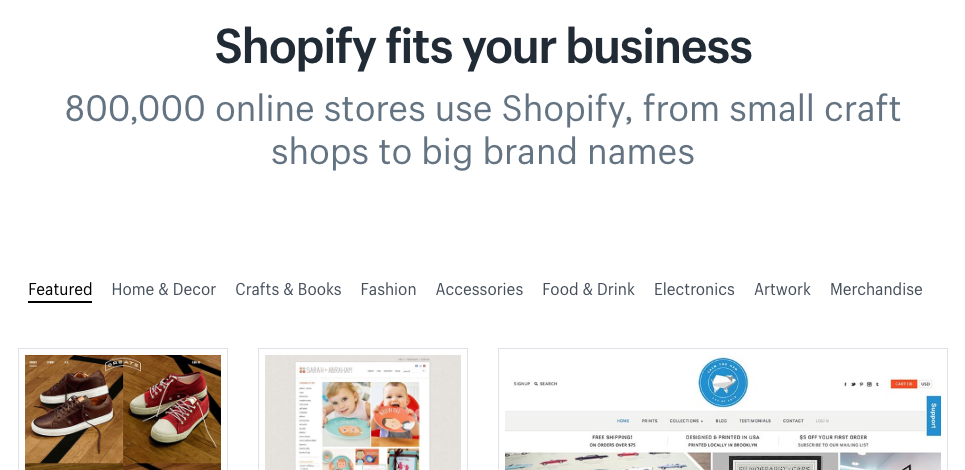
17. Examples Directory
Shopify users can find ideas and inspiration from the examples directory. It also separates them from other platforms by demonstrating the versatility of themes. (Shopify Examples)
Flywheel Marketing

18. Shopify Apps
Shopify leverages the effort of others with an app store. An app store makes the platform extensible while getting developers to buy into their ecosystem.
The app store functions like a market economy that serves needs that Shopify would be unable to imagine or satisfy. Shopify benefits in the form of commissions and satisfied store owners.
Users may come to depend on a combination of apps that makes it hard to find a viable alternative if they leave the platform. (Shopify App Store)

19. Frenzy — Flash Sales
Urgency is used a lot in retail marketing. In 2016, Shopify launched a mobile app that helps store owners run flash sales. (Frenzy)

20. Shopify Studios
At some point Shopify realized that customers and partners could use their expertise in making compelling videos. In 2019, Shopify launched Shopify Studios, a full-service television and film content and production house. (Shopify Studios)

21. Exchange Marketplace
Shopify also hosts a marketplace for buying and selling Shopify stores. (Exchange)
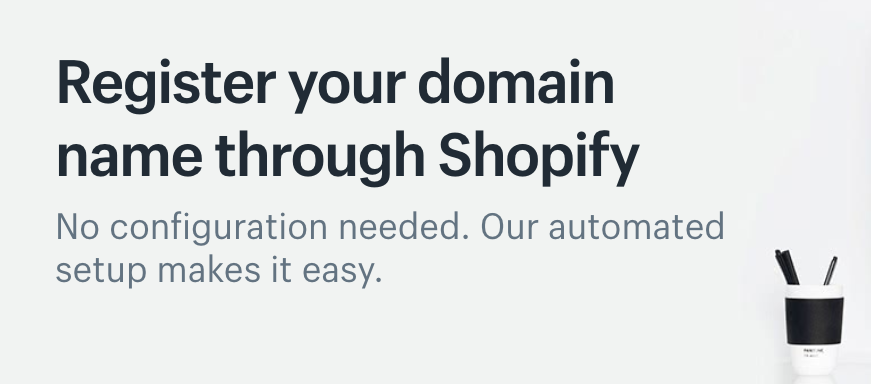
22. Shopify Domains
Domain registration is another example of Shopify expanding where it makes sense. Shopify store owners need domains. Perhaps people considering selling on other platforms will stumble on Shopify Domains and reconsider. (Domains)

23. Shopify Experts
Professional services are less scalable but still important. Shopify found a way to fill skill and knowledge gaps without directly getting involved. The Shopify Experts program is a way to connect store owners with experts and stay in tune with what users need. (Shopify Experts)
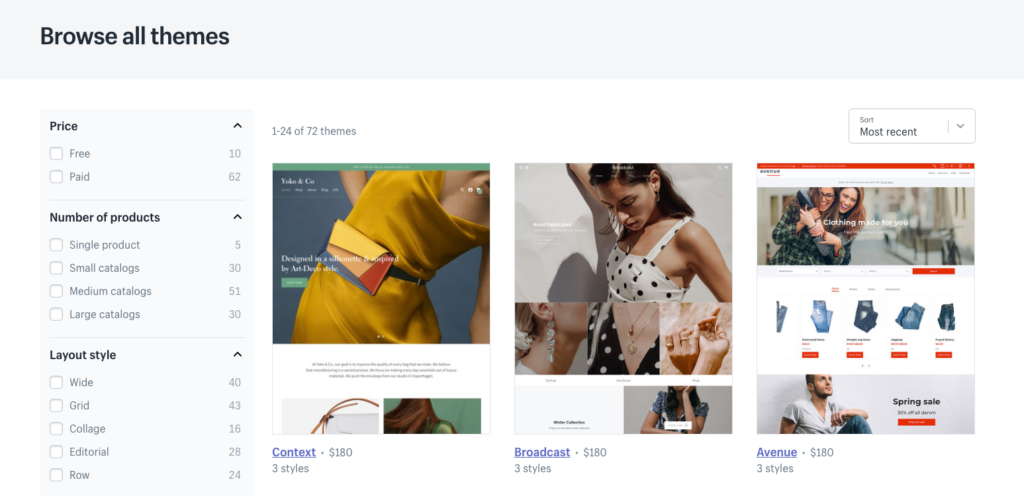
24. Shopify Themes
Shopify can’t keep up with all user tastes and needs. Shopify’s theme marketplace helps users customize their stores and extends platform functionality.
Potential earnings help with developer buy-in. Themes fit to the Shopify platform help with user lock-in. Like the app store, the theme marketplace improves the ecosystem while generating revenue for Shopify via commissions. (Shopify Themes)
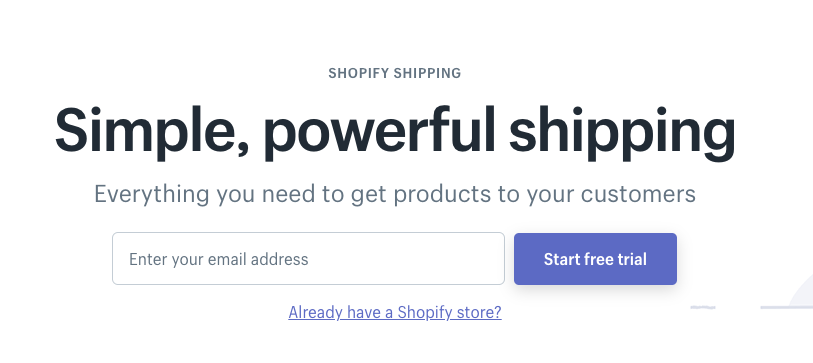
25. Shopify Shipping
Nearly all Shopify store owners have to navigate shipping. Shopify Shipping is no surprise as Shopify has shown their willingness to take on any friction in the process of selling online. They partnered with carriers for lower rates, shipping estimates and store integration. (Shopify Shipping)

26. Oberlo
Oberlo removes the question of where to find products to sell. This multiplies the number of potential Shopify customers. This dropshipping strategy resembles the Shopify affiliate program. Instead of selling SaaS, affiliate partners sell products. (Oberlo)
Affiliate Marketing

27. Affiliate Program
Shopify has a generous affiliate program. This allows Shopify to create a large, independent salesforce that’s paid for performance. (Shopify Affiliate Program)
Permission Marketing
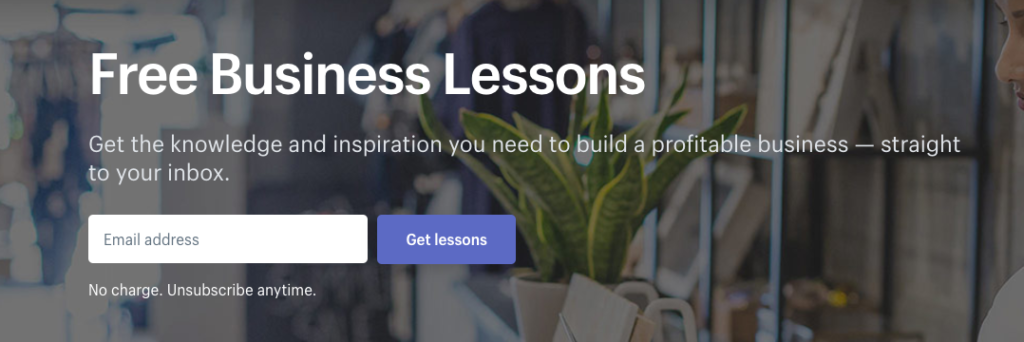
28. Email Address for Content
Shopify uses content as lead magnets to stay in touch with prospects and test offers. (Post)
Partnership Marketing

29. Amazon
Amazon recommended Shopify to users when they shut down the Amazon Webstore service in 2015. In 2017, Shopify announced that users would be able to sell on Amazon from their Shopify stores. (Post)

30. Snapchat
In 2019, Shopify announced that store owners would be able to buy and manage Snapchat ads directly from the Shopify platform. (Article)

31. Paystack
In 2016, Shopify partnered with Paystack to allow store owners to accept payments in Nigeria. Paystack was also mentioned in Stripe’s flywheel marketing strategy. (Page)
Thanks for reading!
Which company you would like to see next?
Let me know — @DruRly.
Check out the playbook series for more growth strategies.